Long Read: Gil-Mualem Doron’s project ‘Cry, the Beloved Country’ – reviewed
September 16, 2020
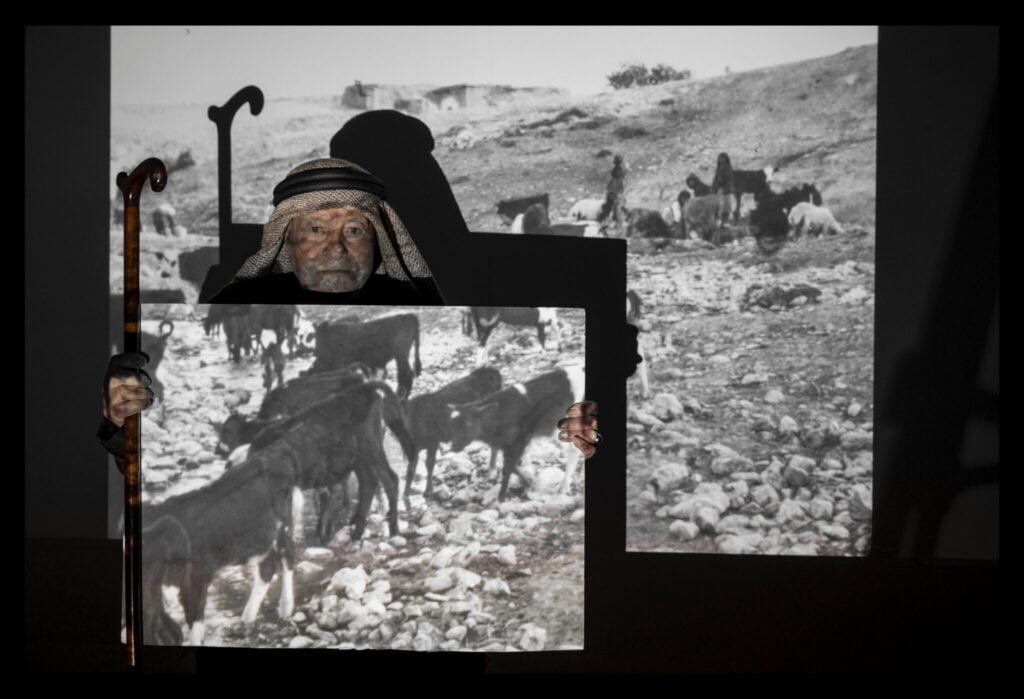
Image: Gil Mualem-Doron, Present Absentees (2019)
Archives of a Country Lost
My first thought when I saw Mualem-Doron’s exhibition was of the play ‘Rhinoceros’ by Eugene Ionesco, a tale of people renouncing their humanity and an individual who refused to conform. ‘Cry, the Beloved Country’ showcases part of Dr. Gil Mualem-Doron’s work from 2013 onwards. Showing photography, installations, documentation of public interventions and participatory projects, he takes a critical look at the Israeli government’s practices and their consequences on both the Palestinian and Israeli people. The exhibition is as diverse as it is thought-provoking, dystopian and heart-wrenching. His work is loud, like the sounding of an alarm – it makes me think of someone trapped inside a soundproof chamber, shouting for help and hoping to be heard.
Now, committing to an unbiased opinion is expected when reviewing a person’s work, however regarding Gil Mualem-Doron’s exhibition at P21 Gallery I fear this might be an impossible task. Not for lack of trying, but when your very existence is a consequence of violence and trauma, how can you ignore the frame of your own reality? A reality reflected back through the looking glass of the son of two countries considered to be the root cause of the violence.
‘Cry, the Beloved Country’ begins at the crossroads between our family histories; me as a third generation Palestinian and he as a child of Holocaust and Iraqi Farhud survivors and a British-Israeli national. It is here that I choose to start, with these crossroads as our common ground.
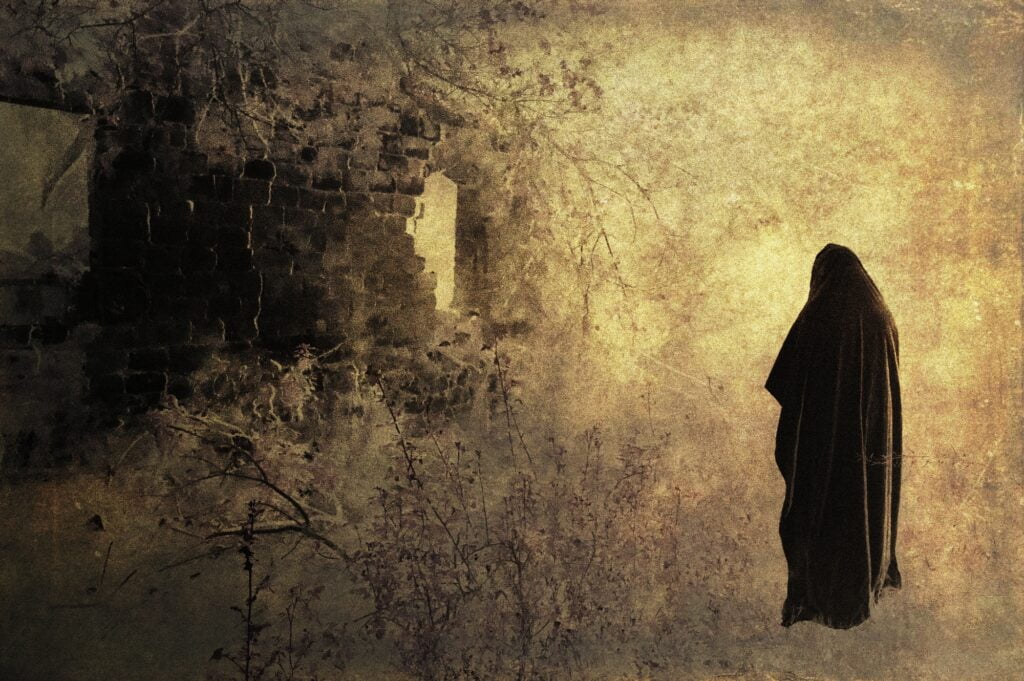
Image: Gil Mualem-Doron, No Man’s Lands – Hamad’s Series (2019)
72 years have passed since the British left Palestine, and like with the majority of their ex-colonies, the Empire left the people divided and destitute. My family was forced off their land during the Nakba in 1948 and were never allowed back. Although I feel powerless in the face of the state of Israel I cannot accept the continued atrocities it carries out to this day. As a consequence of my family’s exile I was born and raised in France. I should be able to call it home unfortunately this home has never been very welcoming. I believe my country has yet to own up to its brutal colonial past, its collaboration with the Nazi regime, and its present institutional racism. I am, as Gil Mualem-Doron, estranged from my nation while incredibly privileged, free to move yet unable to ignore the ignominy in my homelands. In this stateless middle-ground we meet.
The exhibition title, ‘Cry the beloved country’, alludes to the claim that Israel is an apartheid state; a recurring argument, well established in left-wing academic circles. The title does not simply refer to Alan Paton’s novel, published in 1948, that portrays South Africa’s apartheid; it is, in fact, a direct reference to the title of an article, published in 1953, by Dr Ezriel Karlebach, the chief editor of Maariv, the most popular newspaper in Israel at the time. In the article, the comparison between the Black South African population under apartheid and the Palestinians under Israeli rule is made explicit. Specially translated for the exhibition, it is a fascinating read.
“Artivism”
The main installation (by the same title) ‘Cry, the Beloved Country’ is born of two live public performances – one in London and one in Tel Aviv – held in both of the artist’s home countries. In the Trafalgar Square performance that took place on the eve of the Balfour Declaration’s centenary, passers-by are reminded of the instrumental role played by the UK in establishing the state of Israel; denying the native Palestinian population their rights for self-determination. The Tel Aviv performance, on the steps of the Independence Hall where the Israeli Declaration of Independence was signed addresses the (literal and figurative) grounds on which the nation was built; Mualem-Doron wears a Ku Klux Klan robe made from his own Jewish prayer shawl to illustrate his sense of responsibility as an Israeli citizen strongly opposed to his country’s treatment of others. The completed work, which is shown online as a slide projection, displays a series of racist quotes made by Israeli politicians and other public figures. They appear side by side with other racist quotes by fascist leaders targeting the Jewish community living under Nazi Germany and by KKK members against African-Americans. The chilling resemblance between the various quotes matches the disturbing image of the KKK clad figure in the middle of Trafalgar Square saluting Nelson’s statue.
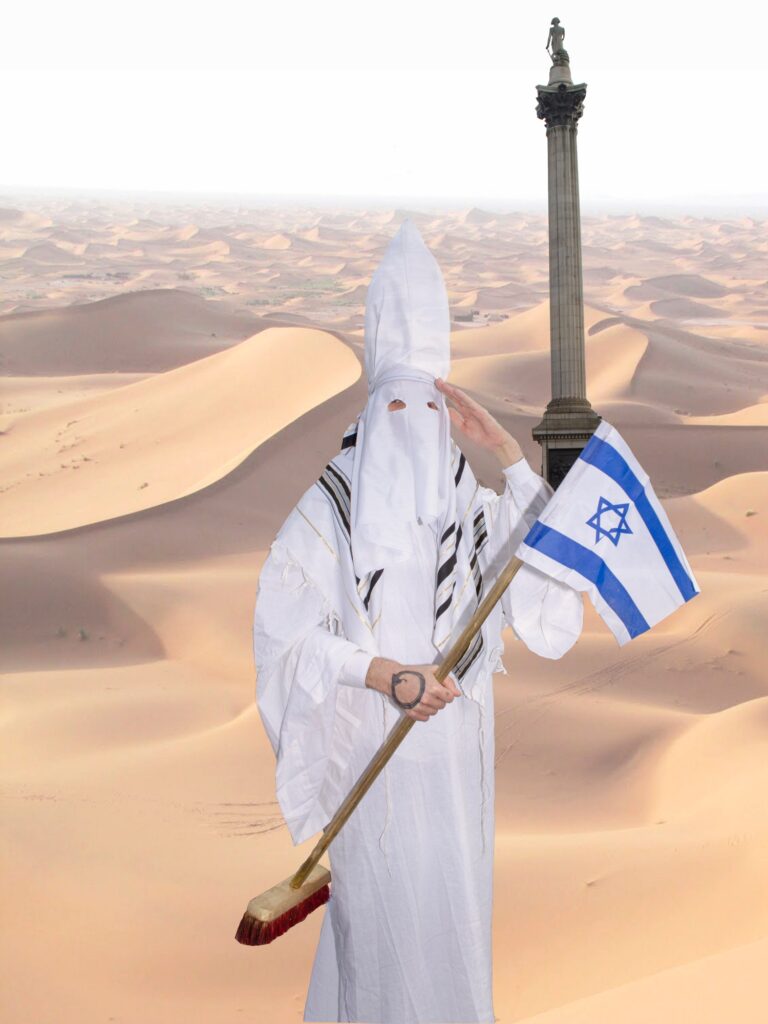
Image: Gil Mualem-Doron
In ‘Visit Israel – You will never be the same’, a collaborative piece produced with the Palestinian-Israeli collective ActiveStills, his use of photographs of crimes carried out in the Occupied Territories sheds light on the hypocrisy of the Israeli Ministry of Tourism and the subtle processes enabling the occupation to continue unimpeded. The piece’s satirical nature alludes to censorship practices threatening peaceful forms of resistance and collaboration.
The Archive
The aforementioned works, as well as a few others in the exhibition, are purposely provocative if not transgressive; indeed Mualem-Doron has been portrayed on occasion as an “Artivist” – artist and activist. However with his current exhibition, in the move from street interventions to a gallery space, he appears to take on the role of archivist. Much of his work consists of investigations and gathering of testimonies, footage and historical objects, all instrumental in the production of the exhibited pieces.
The exhibition is a rich archive of audiovisual content. Haunting audio testimonies can be heard in ‘Obscured’, pre-1948 photographs of Palestine are used in the short film ‘Rosetta’ (commissioned by Zochrot) and in the award-winning photography series ‘Present Absentees’; floor tiles from a destroyed Palestinian house were used in a project with Palestinian school children named Bibi’s House. Mualem-Doron’s archival practices can be traced back to his PhD research which began with the documentation of the remains of a small Palestinian village in Tel Aviv. That one and another 400+ Palestinian villages were obliterated and erased from history in 1948.
In the exhibition, the artist attempts to bring back Palestinian culture broadly denied by Israel through the exploration of Palestinian embroidery. The iconic embroidery patterns are stencilled onto objects and installations asking visitors to engage with their linguistic quality and revealing intricate codes decipherable only by those willing to listen and learn.
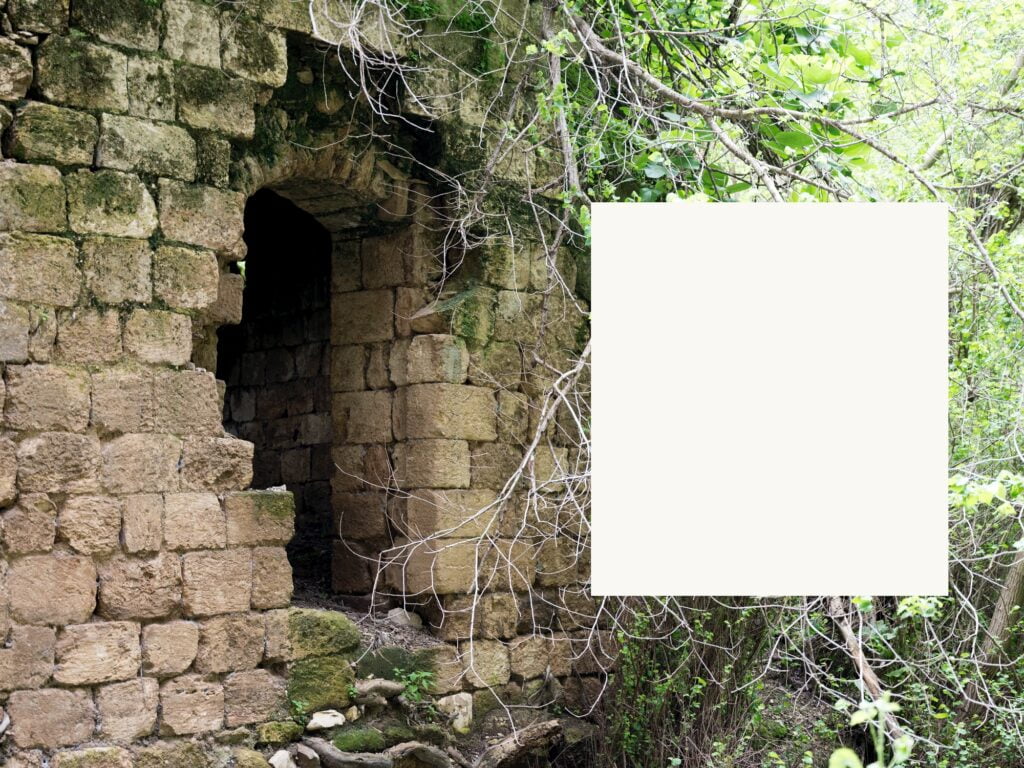
Image: Gil Mualem-Doron, al-Lajjun (2019)
Time is a key issue in Mualem-Doron’s work. In ‘Present Absentees’, a series of photographs featuring internally displaced Palestinians from the destroyed village of Al-Ajjun, now Israeli citizens, the subjects hold up a white canvas onto which is projected a scene from their lost village while being “shot” by Mualem-Doron, the figure of the Israeli artist. The blank canvases are a reference to the colonial imagery of the “tabula rasa”, the alleged empty places that are “open” to colonisation, imagery of Palestine as a wilderness (Shemama). To negate this concept, Mualem-Doron, using Umm-El Fahem Gallery’s archive, asked the participants to choose images of their destroyed village to be projected onto the canvases. During the photoshoot the projection of the images onto the boards blinded the participants who were facing the light emitted from the projector. This piece literally sheds a light on the historical injustice of the Nakba (1948) and simultaneously outlines the subjects’ limited control over their image and over their land, life and history. While blinded by the projector, the participants cannot see the photographer, who disappears behind the spotlight. In this case the divide between subject and object, a key issue in any photographic production, speaks louder than words.
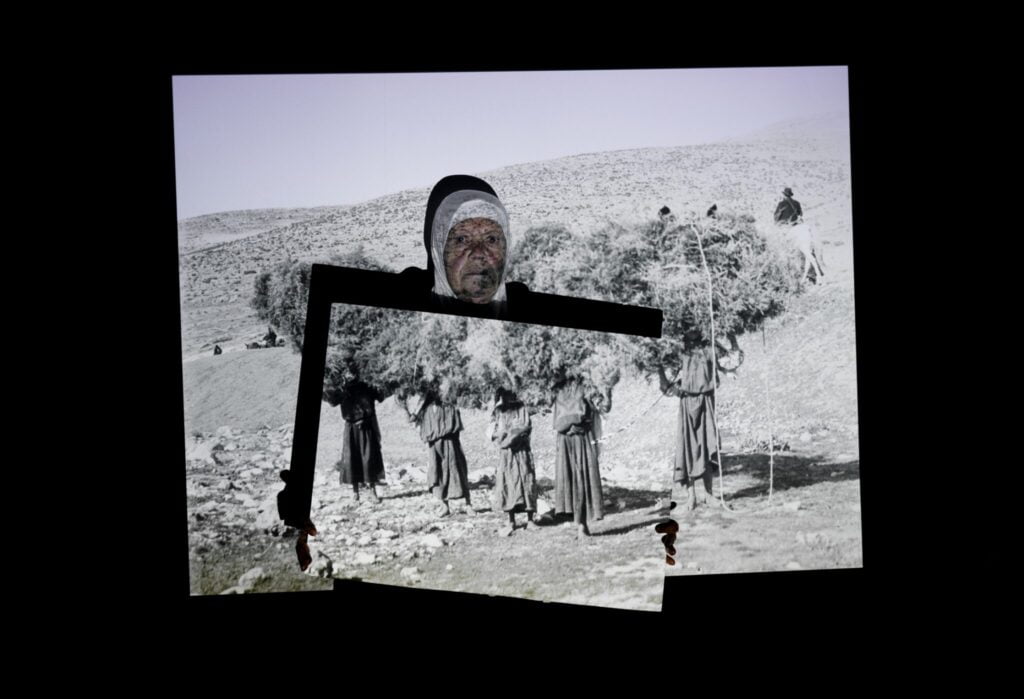
Image: Gil Mualem-Doron, Present Absentees (2019)
Inclusive dialogue
The Israel-Palestine issue is too often looked at from a binary perspective: one people versus another, oppressor and oppressed. Oppositions are also at play in any gallery visit, artist and viewer, expression versus interpretation. Similarly to his street interventions where he breaks the fourth wall, Mualem-Doron attempts to introduce a more fluid non-binary perspective on the exhibition itself. In the film-installation ‘Obscured’ visitors see a short film of a sunny day on a beach in Tel Aviv. The primary soundtrack in the room is the sound of cars, people and music along the beach. In front of the screen, dangling from the ceiling are headphones. To use them the viewer must get up from the provided seating and stand in front of the screen. This second track reveals testimonies of Palestinians discussing their relationship to the sea (or lack thereof), and accounts of attacks that took place on various beaches by Israeli civilians and the military. By standing up and listening, the viewers physically block the postcard picture image of Tel Aviv Beach.
This piece is particularly disturbing; like the ‘Cry, the beloved country’ installation, it is a wake-up call, revealing the insidious and gradual transformation of Israeli society, its conformism, indifference to injustice, suffering and racism. By refusing to detach art from the place and conditions in which it is created, Gil Mualem-Doron’s statement is unapologetically political and addresses his people directly. His work is messy, convoluted and hard-hitting, like the reality in which it is created, but it digs deep and sets the ground for realistic and comprehensive foundations to be built upon.
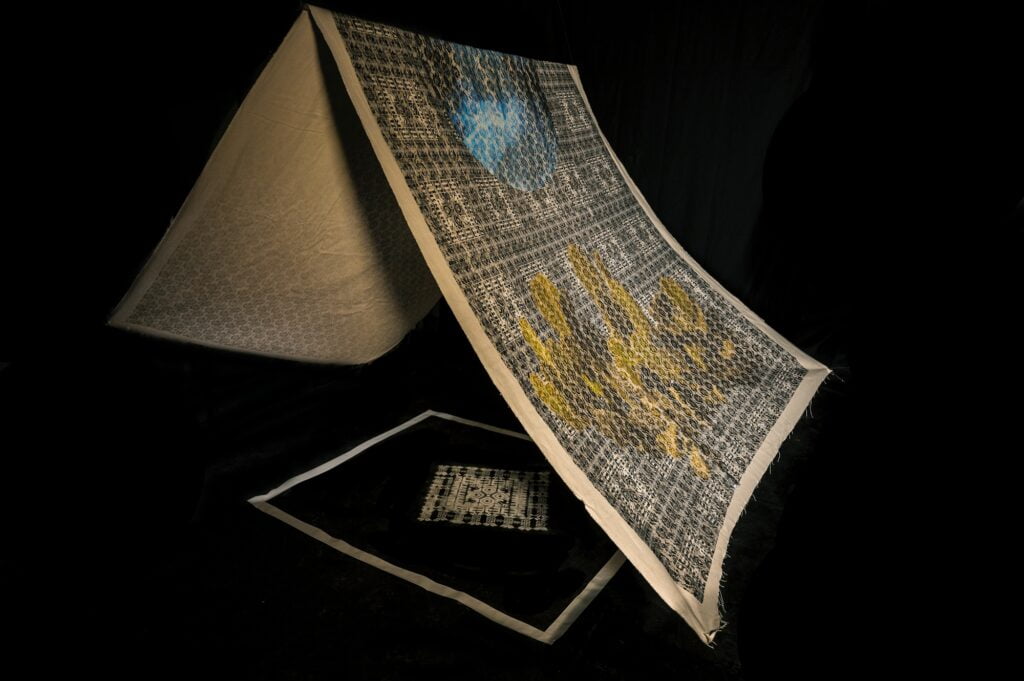
Image: Gil Mualem-Doron, The House Murdered (2020)
Eugene Ionesco claimed “Ideologies separate us. Dreams and anguish bring us together.” ‘Cry, the Beloved Country’ runs from ideology and though it offers no solutions, the exhibition forms an eclectic archive of anguish, pain and resilience. If we judge art not by what it is (which we cannot) but by what it does, Mualem-Doron’s work creates a space where two conflicting sides can sit together and imagine a shared future.
Find out more about the exhibition and view the work in ‘Cry, the beloved country’ on Gil Maulem-Doron’s website.
Sources:
- Mualem-Doron, Gil, (2000) The Dead Zone and the Architecture of Transgression, Ph.D, Delft University of Technology
- Williams, Charles, Pétain, Palgrave Macmillan, London, 2005
- Vicuña, Manuel. “La SNCF, «rouage de la machine nazie d’extermination»” Libération, 25 Jan 2011. Web 25 Jan 2011
Filed under: Art & Photography
Tagged with: activism, art, artivism, conflict, country, Cry the beloved country, exhibition, history, Israel, online, oppression, oppressor, palestine, photography, State, violence
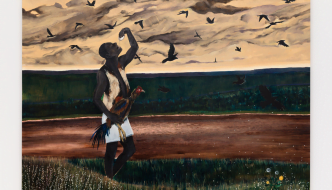
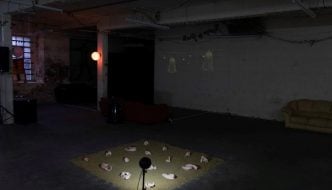

Comments